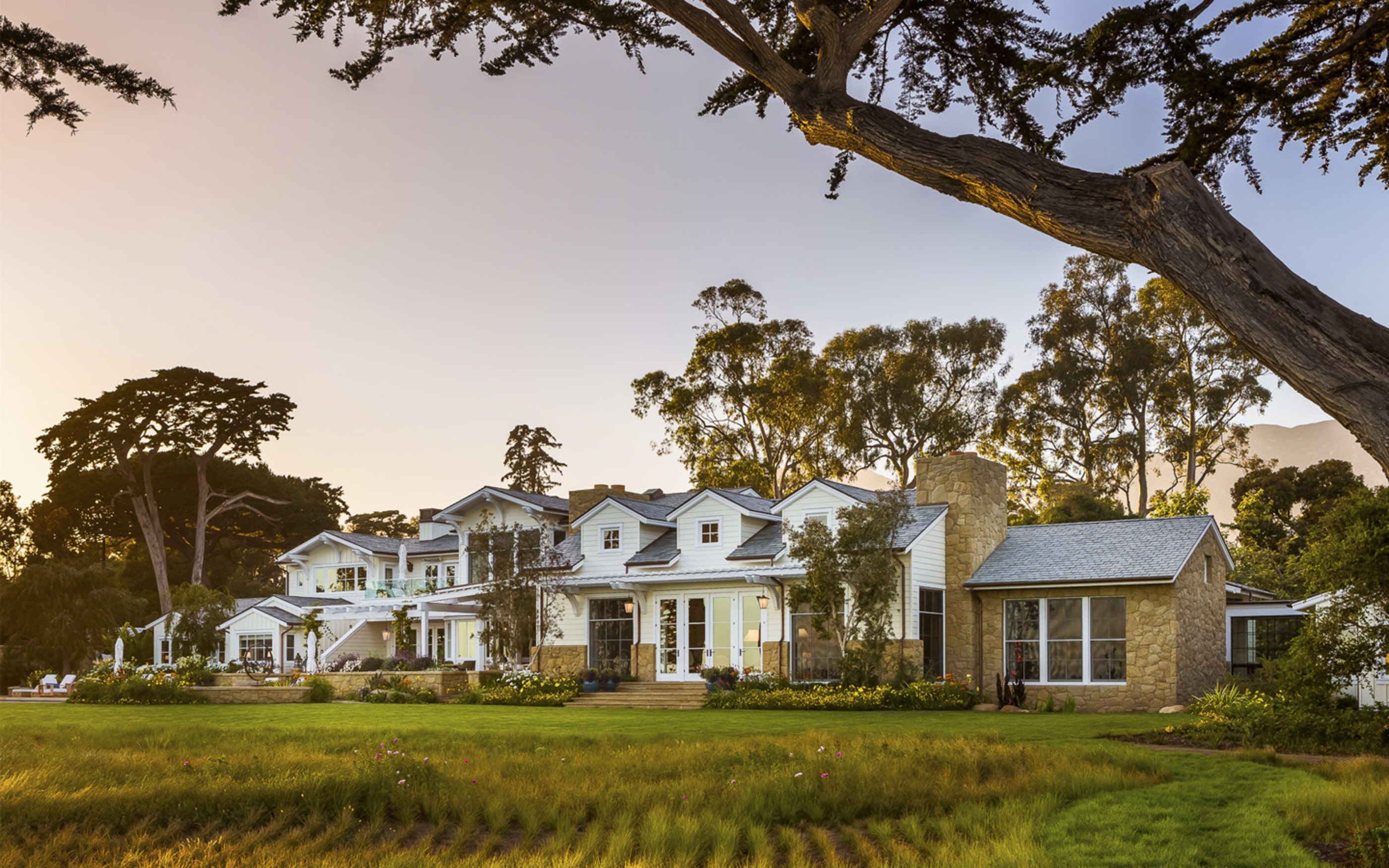

Designers and architects are masters at dreaming up ingenious ways to meet their clients’ requests. But the divergent requirements for a sizable property near Santa Barbara required more than a little creative sleight of hand from its design team. The owners’ longtime designer, Chicago-based Tom Stringer, sums up the challenge: “Our mandate was, ‘Fully develop this site to its maximum potential, give us every facility and luxury that we could ever want, and yet make it feel simple.’ ” He laughs. “Problem-solving is fun,” he adds. “If you tell me to make it giant, yet feel small and really simple, but ultimately it’s super-complicated, now that’s interesting.”
From the start, the wife envisioned a place where she could kick off her shoes and not feel like anything was too precious. Her husband, meanwhile, wanted a mix of public and private spaces, a sound buffer from road noise and his own personal oasis with a lap pool. Also in the mix were bedrooms for the couple’s grown sons, well-appointed guest quarters, a tennis court, swimming pool and spaces for entertaining.
Architect Mary Andrulaitis echoes Stringer’s assessment. “The clients had a huge program,” she says. “Though the property is over 4 acres, there were a lot of constraints on the site—we had to work around the protected trees; there was also a geological bluff setback that we couldn’t build on. The challenge in the end was to design the house so that it wouldn’t feel as big as it is.” Fortunately, the property offered a blank slate. Set high on a bluff above the ocean, it was planted with oak, cypress and eucalyptus trees and occupied by a board-and-batten cottage dating from the 1940s. “That cottage definitely set the tone,” Stringer recalls.
The feeling of simplicity is evident at the house’s understated entrance, where a stone-paved courtyard opens to a long gallery, highlighted by a large abstract work by Joan Mitchell. Just beyond, two stone fireplaces flank the airy living room, where a painting by Cecily Brown adds a burst of color. “Scale was important,” says Andrulaitis, who collaborated with partner Andy Neumann on the design. “The fireplaces are grand but not too oversize.”
Andrulaitis and Stringer also devised ways to suggest that the house had been added to over time. The two-story core consists of the living room, dining room, kitchen and family room, and a master suite upstairs. At one end are bedrooms for the couple’s children, and on the other is the guest suite. “The dialogue of materials changes subtly between the main block and the wings—we wanted those to feel like add-ons,” says Stringer. The living room’s easy mix of old and new epitomizes Stringer’s approach for the main spaces: clean-lined, classic seating upholstered in white paired with a selection of contemporary and antique pieces. The boys’ bedrooms are more consistently contemporary, while the guest wing has a more traditional European aesthetic. Throughout are one-of-a-kind pieces from the couple’s collection, such as the antique doors from Turkey that lead to the guest wing and the Assyrian chest in master bedroom.
Despite its size (the house alone is nearly 11,000 square feet), the property reveals itself slowly. “You come in and see the gate house,” Stringer points out. “Then there’s a tennis cabana, but the court itself is obscured. When the house comes into view, you don't see the totality of it. Even on the ocean side, it feels smaller than it is. We worked hard to break down the scale, so that you never go, ‘Wow!’ ”
To help buffer noise from the highway, a stream meanders through the property. “We wanted it to look natural,” says landscape architect Scott Menzel, who assisted the since-retired Sydney Baumgartner on the project. It’s programmed so that during peak traffic hours, the water runs faster. Even the stairs down to the beach are milked to amplify the sound of the surf.
Baumgartner and Menzel, who now has a firm of his own, enhanced the feeling of discovery as you move about the property. “It’s like there are hidden areas just waiting to be explored,” says Menzel. None is more hidden that the husband’s lap pool, which terminated at a teak folly that looks as if it was plucked from a Balinese resort. Designed by the architects, it was crafted in Indonesia, shipped to California in pieces and reassembled on-site.
To ensure that the finishes were seamless and that all the behind-the-scenes mechanical systems on the property functioned flawlessly, builder Paul Franz relied on superintendent/project manager Brian Fuller and superintendent Joe Hahn. Having worked on homes in the area for years, Franz is accustomed to complicated projects. “Everything here looks simple, but it isn’t,” he says. “That’s the complexity of a house of this scale and the systems involved.”
In the end, the team created a one-of-a-kind beach property that is more than a sum of its parts. “This is a place to relax,” says Stringer. “The whole point is to be able to run around in jeans and a T-shirt.”